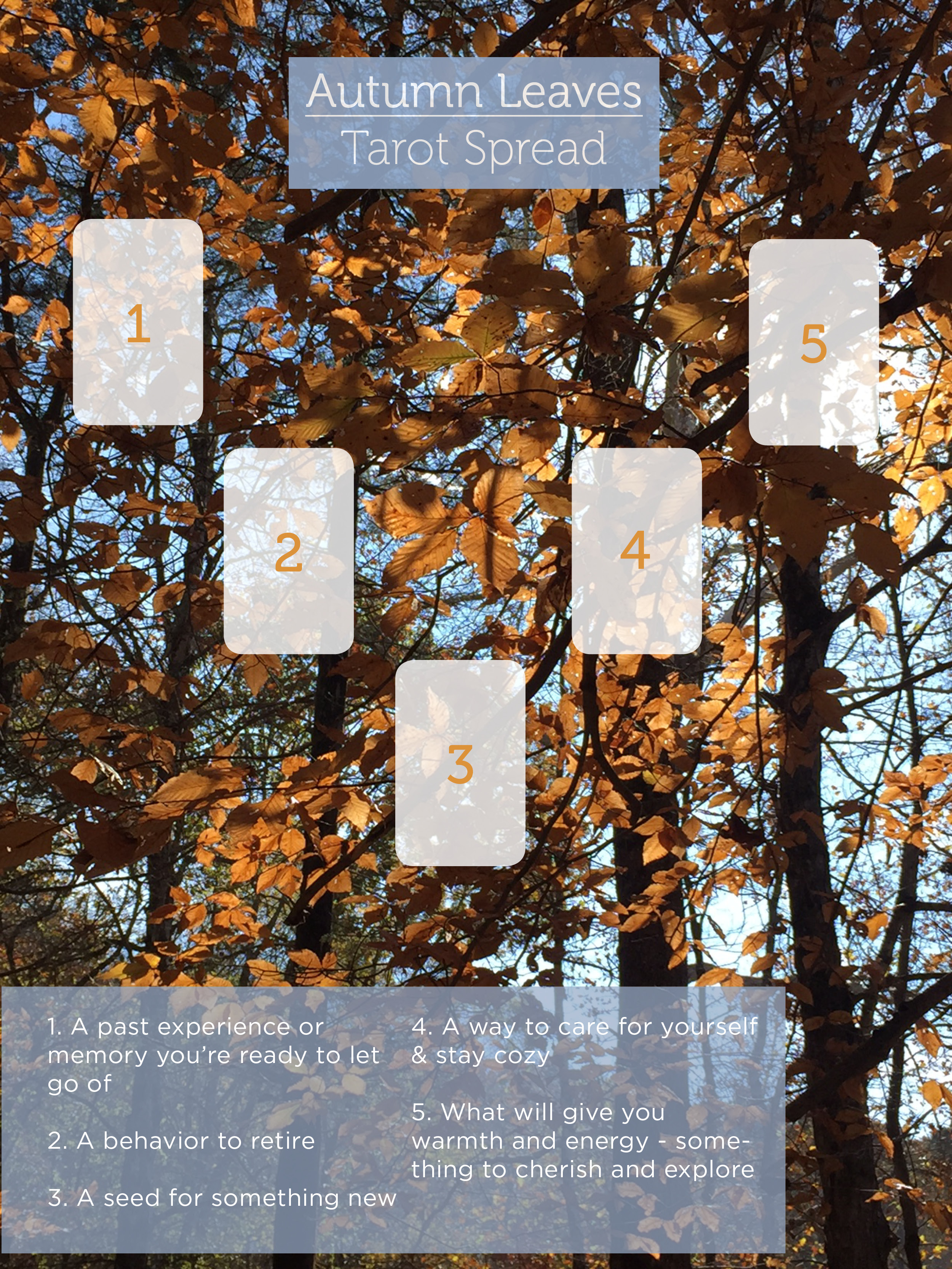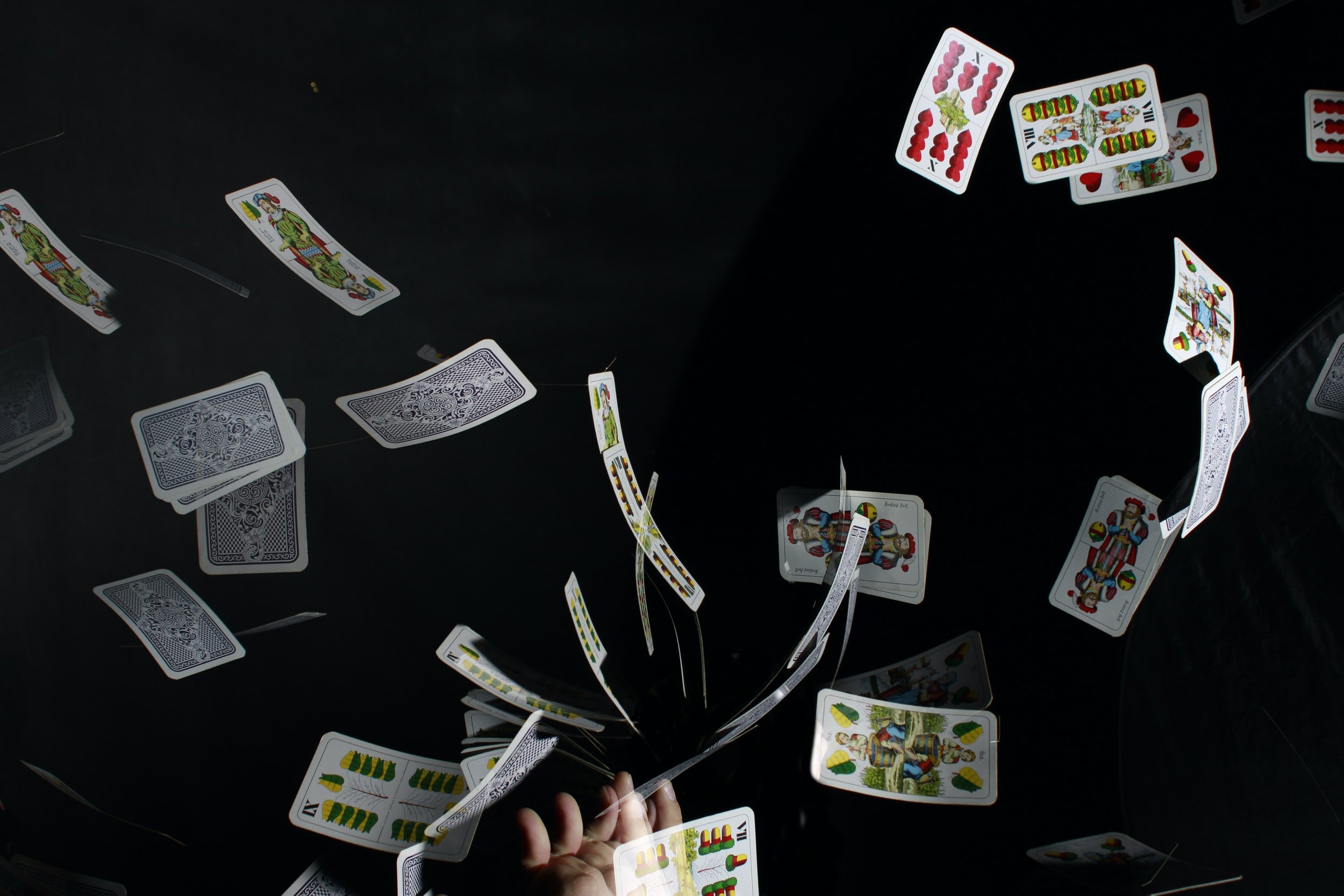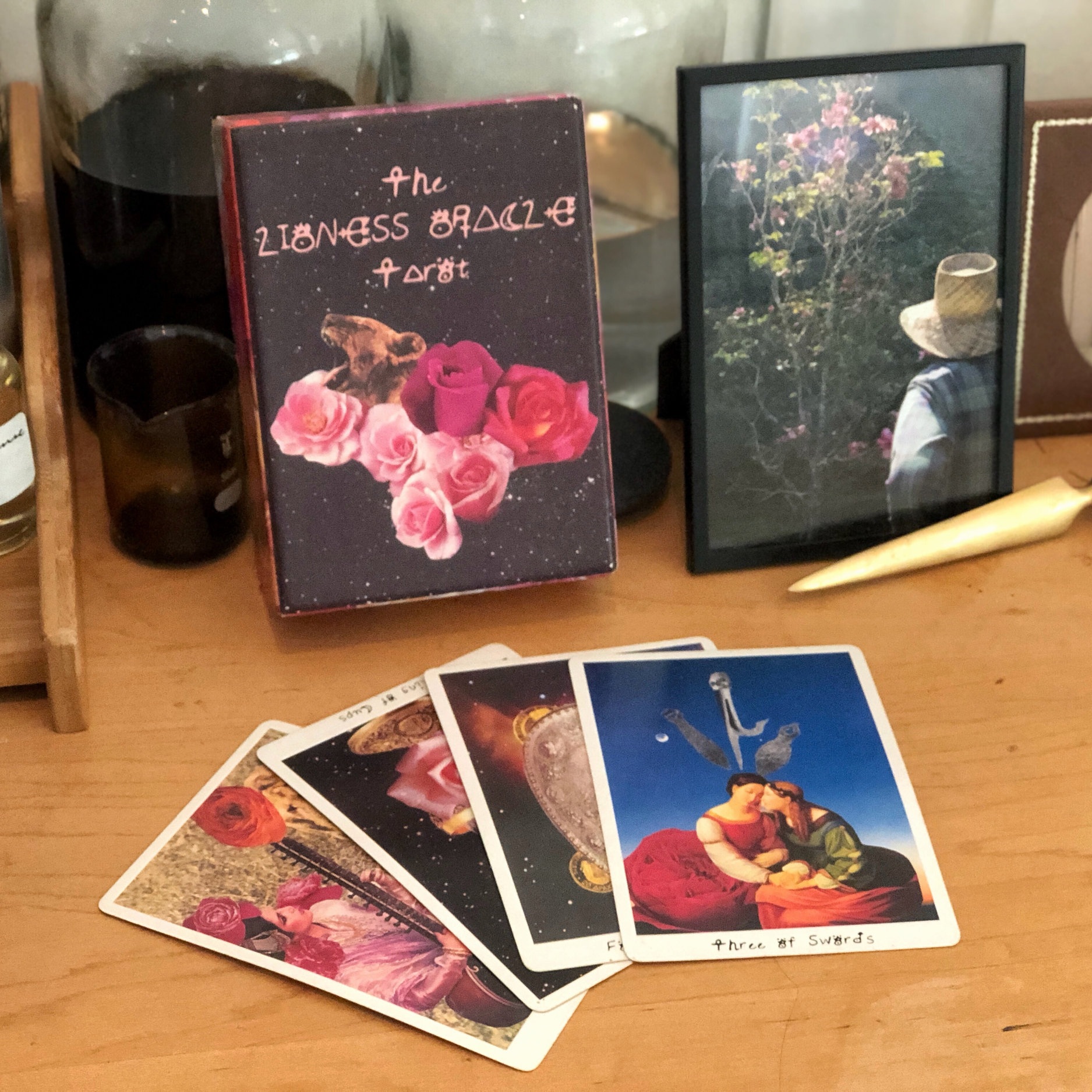Autumn Leaves Tarot Spread
Fall is here and I couldn't be more excited. One of my favorite things to do it wander around outside exploring. There's nothing like seeing all the nuances and hidden secrets in nature: the crisp antique blue of the fall sky, strange mushrooms growing under a log, an odd flower you've never seen before.
This weekend I spent three hours walking along the trails of a park near my house. I found myself fascinated by the rustling autumn leaves, how they dry to a crisp that makes that evocative rattling sound, and the magic of witnessing leaves falling to the ground. (Seriously, they hang on for so long, it's miraculous to me that I can see the exact moment they leave their home and cascade to the ground. What a privilege!)
This inspired me to make a tarot spread reflecting the changes we all undergo in Autumn. I think the process of shedding old growth applies to all creatures, including us, so I made this spread to look into what we're leaving behind and how we can care for ourselves as we "shed our leaves."
Not just a spread for fall, these cards are wonderful for any transitions and moments where we need to commemorate a change, especially one where we need some breathing room afterwards before we start of running again. Click here or on the image above for a full rundown.
I hope you find it helpful :) Happy fall!











It’s so easy to get serious when reading tarot. With cards like The Tower, The Hermit, and the Ten of Swords, who could blame you for painting sweeping pictures, waxing poetic about existential dilemmas, and focusing on the mythic in the mundane? I’ve noticed, however, that sticking to these areas when reading can lead to burnout, not to mention a limited understanding of the cards. If everything is epic, how can you go to the cards to understand smaller issues like daily decisions, exciting and low-stakes choices, or even open-ended explorations of themes?